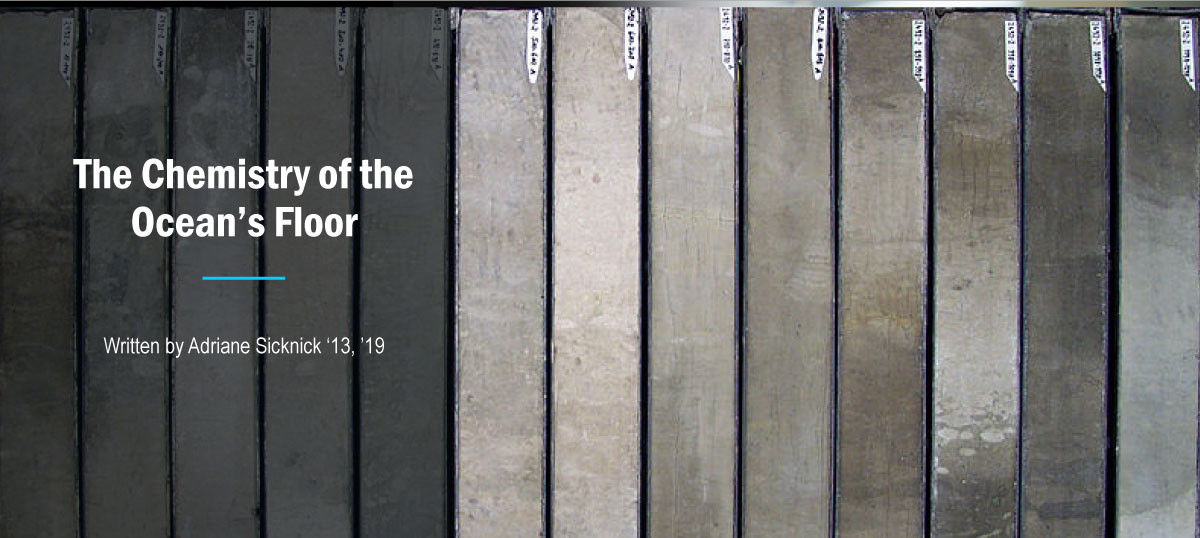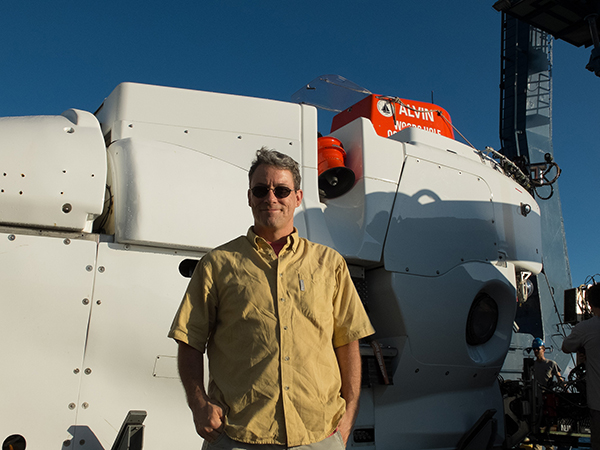Fall 2022 Issue

Photo credit: Wikimedia Commons
Sometimes finding your calling isn’t always a straight line – it’s filled with unexpected twists and turns. In the end, it’s the journey that helps define who you are and what your passion is.
In the '80s, James McManus ’86 found himself on a similar journey. He was fond of both writing and science but was at a crossroads when trying to choose a career. Ultimately, he found himself on a path to becoming a journalist, which took him to a prestigious university in Philadelphia. However, he quickly realized he wasn’t in the place he wanted to be.
“Within the first few minutes of my first class, I realized I didn't want to be a journalism student.” A statement his professor made at the beginning of the class made him realize he wasn’t where he wanted to be. “His first words to the class were, ‘You think you want to be a journalism student, but you don't want to be.' The professor went on to explain how he got to where he was, and he was right. I knew I didn’t want to be a journalism student,” he explained.
Having visited the campus before, he knew if he were going to change direction and pursue science, it would be at Stockton. “I just loved the campus feel. It felt like this is where I belonged,” McManus recalled affectionately.
He transferred to Stockton his sophomore year as an environmental studies major, but through his coursework, he found his true calling.
“I remember taking my first chemistry course during my second term and realized this is what I care about in the environment. To me, the earth and the oceans are basically a chemical reactor. I was most interested in how metals were moving around in the sediment or in the soils. [Chemistry] is happening all around us,” he delightfully explained.
The chemistry program at Stockton nurtured a world of empowerment for McManus by allowing him access to instrumentation and the laboratory outside the typical classroom experience.
“The faculty were fantastic mentors and fostered independence. The students who had a lot of access to instruments – regardless of how complicated – are the ones less intimidated by using them. […] at some point, you have to learn to be independent,” he said. “Stockton was a place where I really couldn’t have built confidence without a lot of the mentorship of the faculty. It was a little thing, but really shaped who I am.”
In the end, it was McManus’s self-awareness that gave him the insight to change direction. Throughout his career, his advice to any student – regardless of discipline – is to think about what gets you excited and up in the morning. Quite often he has found students’ answers to be, “I don’t know," but that is okay.
Borrowing from a famous commencement speech by David Foster Wallace, McManus explained he often tells students to “Let your curiosity lead you. You get to choose what you are interested in and how you interact with the world,” McManus explained. “You don’t want anybody else choosing for you and telling you what and how to think. It’s one of the things that makes us human.”
After pursuing his Ph.D. in oceanography at Oregon State University, McManus worked
in academia for close to 20 years. In 2016, he took on the role of vice president
for Strategy and Administration and Senior Research Scientist at Bigelow Laboratory for Ocean Sciences in Maine. This past July, he was appointed division director, Division of Ocean Sciences, at the National Science Foundation (NSF).
Oceanography - Chemistry of the Ocean's Floor
Vice President for Research and Administration and Senior Research Scientist at Bigelow Laboratory for Ocean Sciences, McManus explains the organization’s focus is on the health of the ocean: “In terms of the changes that our planet is undergoing, impacts will likely happen on everything from algae to fisheries. At the base of the food web, the [ocean’s] plants, on which higher organisms live, may be influenced by the ocean’s temperature, water chemistry, and what is coming into the ocean from the land and atmosphere."
McManus’ research focuses on the chemistry of the ocean floor. “I'm really a chemist that dabbles in geology,” laughed McManus. “My research is focused on understanding what governs sea floor sediment composition or ocean chemistry over the long term. I study the composition of the upper meter of sediments throughout the world’s ocean and learn what it can tell us about the historical processes that happened in the oceans of the past.”

Modern laboratories use a variety of instrumentation, from microscopes to satellites. "These approaches allow scientists to access information that could be used in making future predictions about the state and resilience of the planet. For example, looking at the presence or absence of certain species in the fossil record has provided scientists with information about the climate, the chemistry, and what the global ocean was experiencing at a particular time in Earth’s history. "Scientists can also examine genetic information inside a single cell to using satellites to study the presence of blooms of organisms in the sea today,” McManus said.
Many of the different ways in which humans touch our planet have domino effects on the oceans,” explained McManus
On a local level, scientists use this information to find solutions to issues that plague the coasts and can make an impact locally. “We think about how working with the various organisms can help solve local issues. For example, globally, the ocean is getting more acidic, which shellfish don't like. However, based on research that scientists have been doing at Bigelow Laboratory, it appears possible that if you grow macroalgae and certain shellfish together [co culturing - the act or process of culturing two types of cells or organisms in the same medium], the algae can take up the CO2 that's causing the acidity in the water, which lowers the acidity of the local ocean providing a more favorable environment for shellfish. This approach probably cannot be done on a global scale, but it can be done locally,” he explained.
So how do scientists make predictions for future climate challenges? “There isn’t just one answer,” McManus explained. “Oceanography focuses on getting adequate data to understand physical, chemical, and biological processes that can inform predictions about what might happen under future conditions. Furthermore, we examine the geologic record of past change, which can also inform future change. If you understand what drives contemporary physical, chemical, and biological variability, you can forecast processes in the future. It comes down to understanding how the fundamentals of physics, chemistry, and biology interact with each other to get you to the next ocean state.”
Since this article was written, Dr. McManus was appointment to the U.S. National Foundation of Direcorate for Geosciences as Division Director of the NSF Division of Ocean Sciences (NSF OCE) in July 2022.
On July 30, 2025, McManus returned to Bigelow Laboratory for Ocean Sciences as the inaugural Vice President for Administration and Operations.



